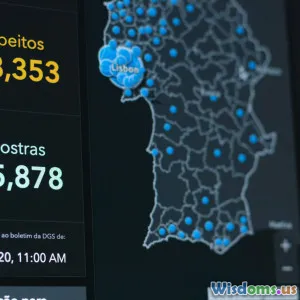
Why Cold Cases Need Federal and Local Cooperation Today
15 min read Explore why solving cold cases today requires strong cooperation between federal and local agencies, with detailed examples, challenges, and solutions for modern investigations. (0 Reviews)
Why Cold Cases Need Federal and Local Cooperation Today
The image of a cold case—dusty evidence boxes, faded photographs, and lives frozen in time—haunts not only the families of victims, but also the investigators tasked with finding truth. With advances in DNA testing, forensics, and digital databases, the hope for solving decades-old mysteries has never been greater. Yet, one factor remains pivotal: strong cooperation between federal and local authorities. In today's interconnected and evolving crime landscape, the quest for justice in cold cases stands or falls on the depth of this partnership.
Introduction
Imagine an unsolved homicide from 1985. Key witnesses have passed away, crucial evidence is deteriorating, police officers have retired, and families remain tormented by unanswered questions. On its own, a local police department might lack the resources or specialized knowledge to re-examine such a case. However, when paired with the vast resources of federal agencies—expert crime labs, advanced technology, national databases—a new chapter in that investigation becomes possible.
But what does this cooperation look like in practice? Why does it matter now more than ever? This article explores the intricate relationship between federal and local law enforcement in addressing cold cases, highlights notable successes, uncovers persistent challenges, and argues for stronger ties in the interest of justice.
What Are Cold Cases and Why Do They Matter?
Defining Cold Cases
A cold case is an investigation—usually into a serious crime like homicide, sexual assault, or abduction—that remains unresolved over a significant period due to a lack of evidence or investigative leads. According to the FBI, a case becomes 'cold' when all logical leads have been exhausted, though it remains open. Crime statistics are staggering: there are an estimated 250,000 unsolved murders in the United States alone, with this number increasing each year.
The Ripple Effect
Cold cases don't just leave justice unfulfilled; they prolong trauma for victims' families and enable repeat offenders to escape consequences. The National Institute of Justice notes a strong link between unsolved cases and increased rates of related crimes, as offenders often continue their criminal behavior undeterred.
The Evolution of Cold Case Investigations
Historical Challenges
Historically, law enforcement’s ability to solve cold cases was limited by geography, manpower, and technology. In the 1980s, for instance, silos between agencies often meant that vital evidence from one jurisdiction might never reach another, letting mobile or serial offenders slip through the cracks.
A New Era: Forensic Science & Data Integration
The approach began to change with the emergence of DNA evidence in the late 1980s. By the 1990s, the FBI established the Combined DNA Index System (CODIS), allowing local, state, and federal agencies to share DNA profiles and solve cases that had languished for years—sometimes decades. For example, in 2001, DNA evidence from multiple cold cases across different states identified serial killer Samuel Little, ultimately resolving dozens of unsolved murders.
Why Is Federal and Local Cooperation Essential?
Diversifying Resources and Expertise
Local law enforcement agencies are often the first to investigate and hold key evidence and community connections. However, federal agencies possess broader expertise, technology, and access to national databases.
For example, the FBI's Victims Services Division can provide trauma counseling and victim support that most small departments lack. The Bureau of Alcohol, Tobacco, Firearms and Explosives (ATF) helps trace gun-related crimes with its National Integrated Ballistic Information Network (NIBIN), yielding breakthroughs in shootings with little local evidence.
"No one agency can do this alone. Cold cases depend on everyone—city police, state investigators, and our federal partners—to share ideas, resources, and information. We owe it to victims and their families." — Bob Troyer, former U.S. Attorney, District of Colorado
Optimized Information Sharing
Federal-state partnerships enable seamless information sharing. Using the National Crime Information Center (NCIC), found missing person or unidentified human remains can be matched across jurisdictions, multiplying the odds of resolution.
- Example: In 2020, the U.S. Marshals Service and local Atlanta officials collaborated through NCIC to locate and return more than 40 missing children in Georgia, some linked to cold abduction cases.
Coordinated Multi-Jurisdictional Investigations
Crimes often cross city and state lines. Serial offenders in particular are likely to victimize people across multiple regions. A local investigator may hit a dead end, unaware that another department holds the missing puzzle piece. Federally coordinated initiatives bridge these gaps.
- Case in Point: The Golden State Killer. For four decades, dozens of rapes and murder cases in California stayed unsolved. Only when local prosecutors joined resources—and the FBI provided assistance and national reach—did a breakthrough using genealogy databases finally identify Joseph James DeAngelo in 2018.
Legislative and Policy Support
Federal and local cooperation helps drive legislative reforms and new funding. The Justice for All Act of 2004, for instance, expanded resources for the National Institute of Justice’s (NIJ) Cold Case Investigation Units, granting local departments support to process old rape kits using federal labs and grants.
The Role of Specialized Federal Units
FBI’s Behavioral Analysis Units, ATF’s criminal intelligence teams, and Homeland Security’s technology divisions routinely lend assistance to local cold case squads. They can offer training, DNA testing, and suspect profiles—capabilities often far beyond the reach of smaller agencies.
Federal Grants and Support
Federal funding—such as the Bureau of Justice Assistance’s Cold Case Solving for Violent Crimes grant—enables cash-strapped police departments to reopen stalled cases, bringing in new analysts and forensic consultants.
- Example: In 2022, the City of Cleveland received over $2.5 million in federal grants to fund cold case biological testing, leading to the resolution of several sexual assault cases from the 1990s.
Real-World Successes Driven by Cooperation
The Atlanta Child Murders
Between 1979 and 1981, a chilling series of child murders gripped Atlanta, with over 28 victims. Years of stagnation ended during the 2019 reinvestigation, when the Atlanta Police Department partnered with the FBI, GBI (Georgia Bureau of Investigation), and federal DNA laboratories. Previously untestable evidence was re-examined, offering new scientific hope.
El Dorado Jane Doe
For decades, the 1991 murder of an unidentified woman (nicknamed "El Dorado Jane Doe") stumped local authorities in Arkansas. In 2018, collaboration between the FBI’s regional field office and local detectives led to a breakthrough via forensic genealogy. Their joint investigation harnessed federal resources to identify the woman, renewing the hope of finally apprehending her killer.
The Norwood Jane Doe (Ohio, 1970)
A 50-year-old homicide, neglected for decades, changed course when the Hamilton County Coroner's Office relied on federal DNA records and the guidance of the National Center for Missing & Exploited Children. Identification brought closure to relatives and reignited a now active investigation.
Major Challenges in Federal-Local Partnerships
Jurisdictional Tensions
Despite shared objectives, law enforcement can sometimes see each other as competitors rather than partners. Jurisdictional boundaries and "turf wars" may stifle the free flow of information needed for cold case breakthroughs. Collaboration agreements—like task forces—help alleviate these tensions.
Data Silos and Inconsistent Standards
Differences in evidence storage, digital file formats, and standards for DNA or fingerprint entries can complicate efforts to merge databases and re-examine cases. State and federal agencies often must negotiate protocols to synchronize records or resolve evidence conflicts.
“We need to agree on unified standards—not just for evidence, but for communication and case management. The clues are there, but only if the right eyes see them.” — Maureen O'Connell, retired FBI cold case specialist
Trust and Transparency Issues
Local citizens may distrust federal involvement, fearing heavy-handedness or politicization. Tackling cold cases successfully requires respecting the needs and insights of community police, including them in decisions, and communicating transparently with victims' families.
Chronic Underfunding
Many rural or urban police units simply don’t have the resources or staff power—even with federal funds—to pursue complex investigations. Sustained partnerships, rather than one-off interventions, are crucial for real results.
Rapidly Evolving Technology
Available forensic technology is perpetually advancing. Small local agencies may lack access to or training in new methods, while federal agencies spend years acquiring, validating, or disseminating tools nationwide. Timely sharing of best practices and resources is essential.
Innovative Models and the Path Forward
Joint Task Forces
Multi-agency task forces blend the strengths of federal and local entities, focusing on high-priority cold cases. The FBI’s Violent Criminal Apprehension Program (ViCAP), for example, supports local detectives with criminal pattern analysis, fugitive tracking, and advanced data visualization—tools proven to link cases otherwise missed.
Opening Data Access
Initiatives to digitize and cross-link evidence have had outsized impact. The National Missing and Unidentified Persons System (NamUs), managed by the Department of Justice, offers free centralized data collection. This facilitates case-solving both locally and nationwide—more than 2,500 previously unidentified decedents have been named using the NamUs approach as of 2023.
Training and Technological Partnerships
The NIJ, in partnership with universities, delivers cold case investigator workshops and webinars across the country, ensuring local officers can make use of cutting-edge forensic advances. Federal grants prioritize funding for departments that participate in capacity-building and knowledge-sharing efforts.
Involving the Public and the Media
Increasingly, federal and local agencies jointly issue media appeals, publish case files, and invite tips from the public. The renewed attention not only yields leads but also empowers families to keep cases in the spotlight.
- Example: The National Center for Missing & Exploited Children (NCMEC), in partnership with police, regularly updates the public about unsolved cases. Their collaboration led to the identification of missing child Jacob Wetterling—28 years after he disappeared—thanks to combined media pressure and clues delivered to federal investigators.
Conclusion: A Call to Renewed Commitment
As history demonstrates, the pursuit of justice in cold cases hinges on collaboration across local, state, and federal lines. Each player brings unique resources, insights, and authority to the table. Yet it’s only when they join forces that the impossible becomes possible—that aging evidence finds its voice, that victims’ families gain closure, and that communities find healing.
The growing toolkits of technology, forensic science, data-sharing, and public engagement are all rendered moot without seamless, trust-based partnership. As cold cases continue to pile up—and as families and entire communities look for answers—the importance of cooperation is not an abstract, bureaucratic ideal: it’s the lifeblood of justice.
To truly turn the tide, agencies must invest not just dollars, but also trust, time, and a willingness to break down institutional barriers. Policymakers must prioritize sustained support. And the public must continue to demand—through persistent advocacy and engagement—that every case, no matter how old, deserves the same commitment and hope.
Only then will the haunting questions of the past finally meet their answers.
Rate the Post
User Reviews
Other posts in Forensic Science
Popular Posts

















